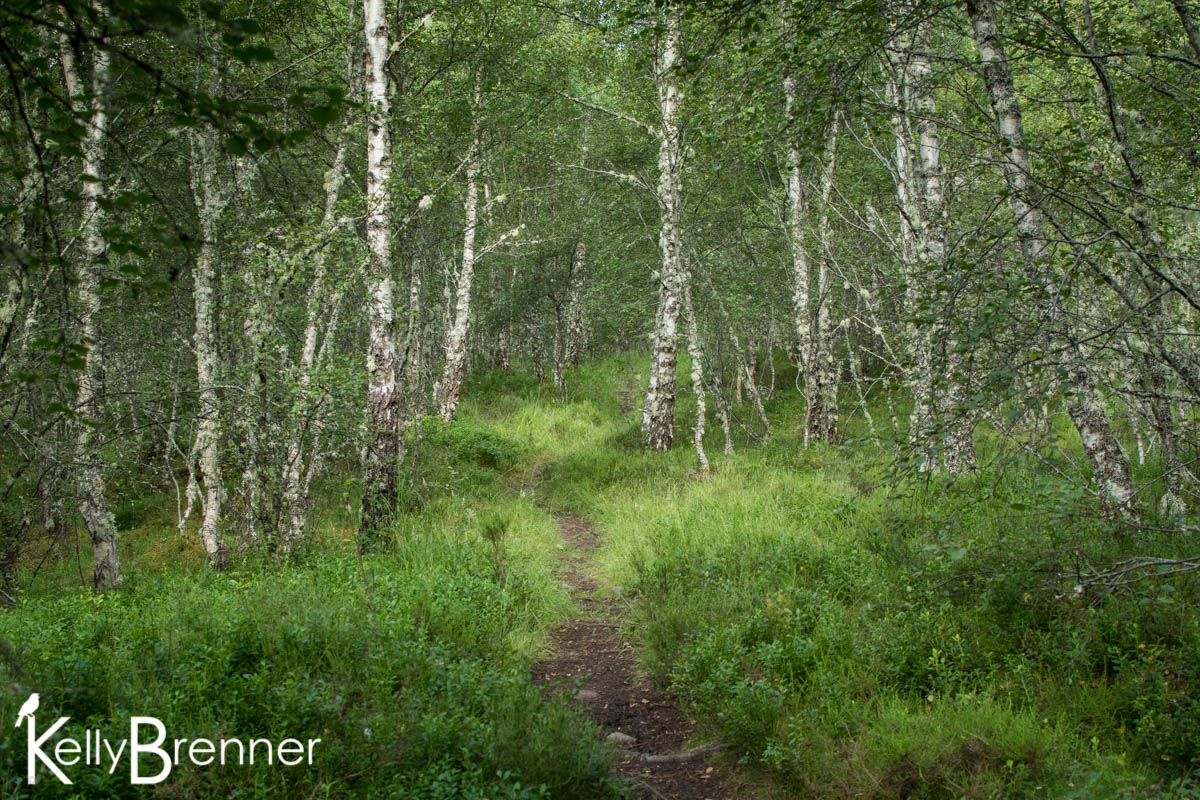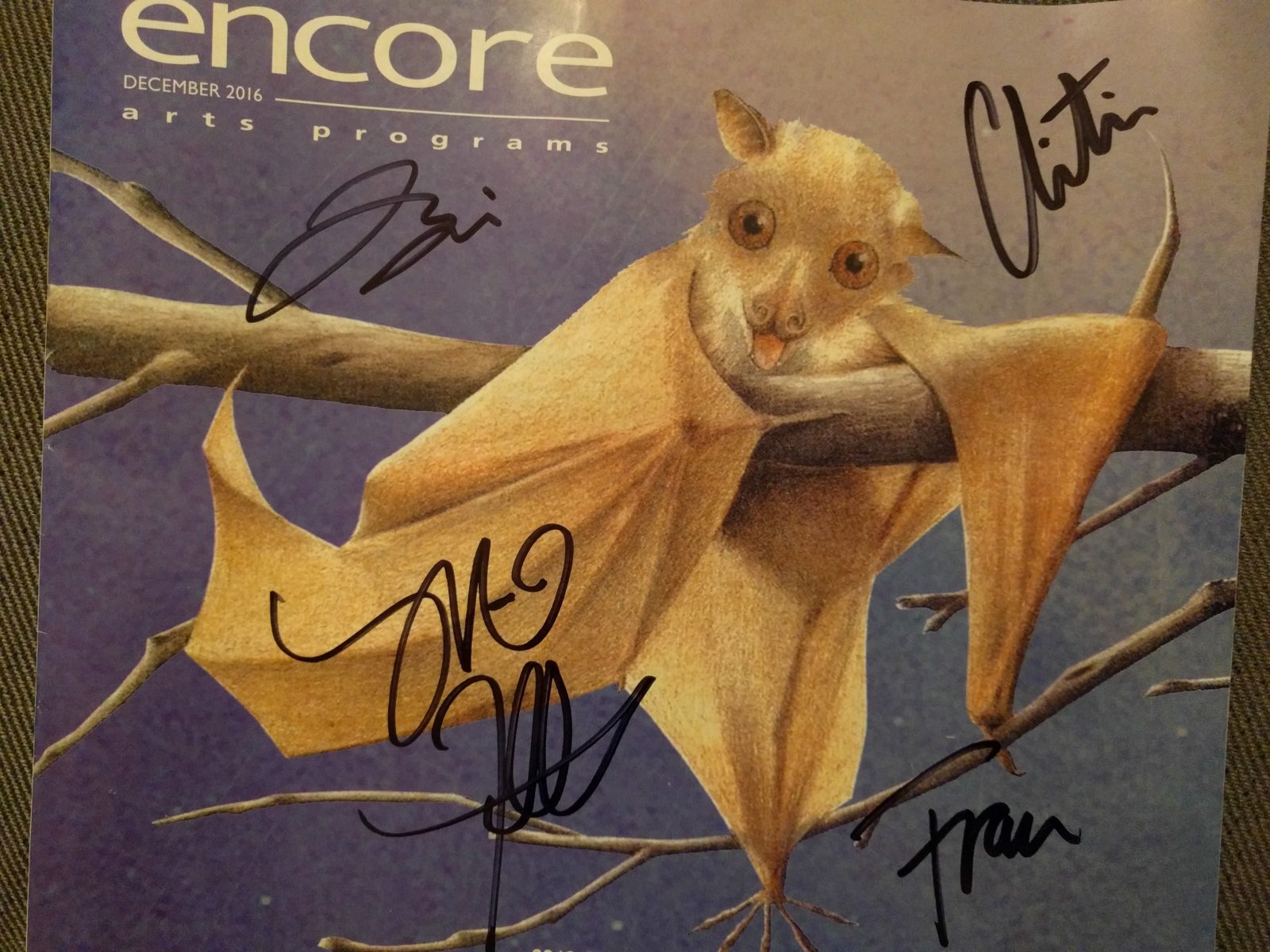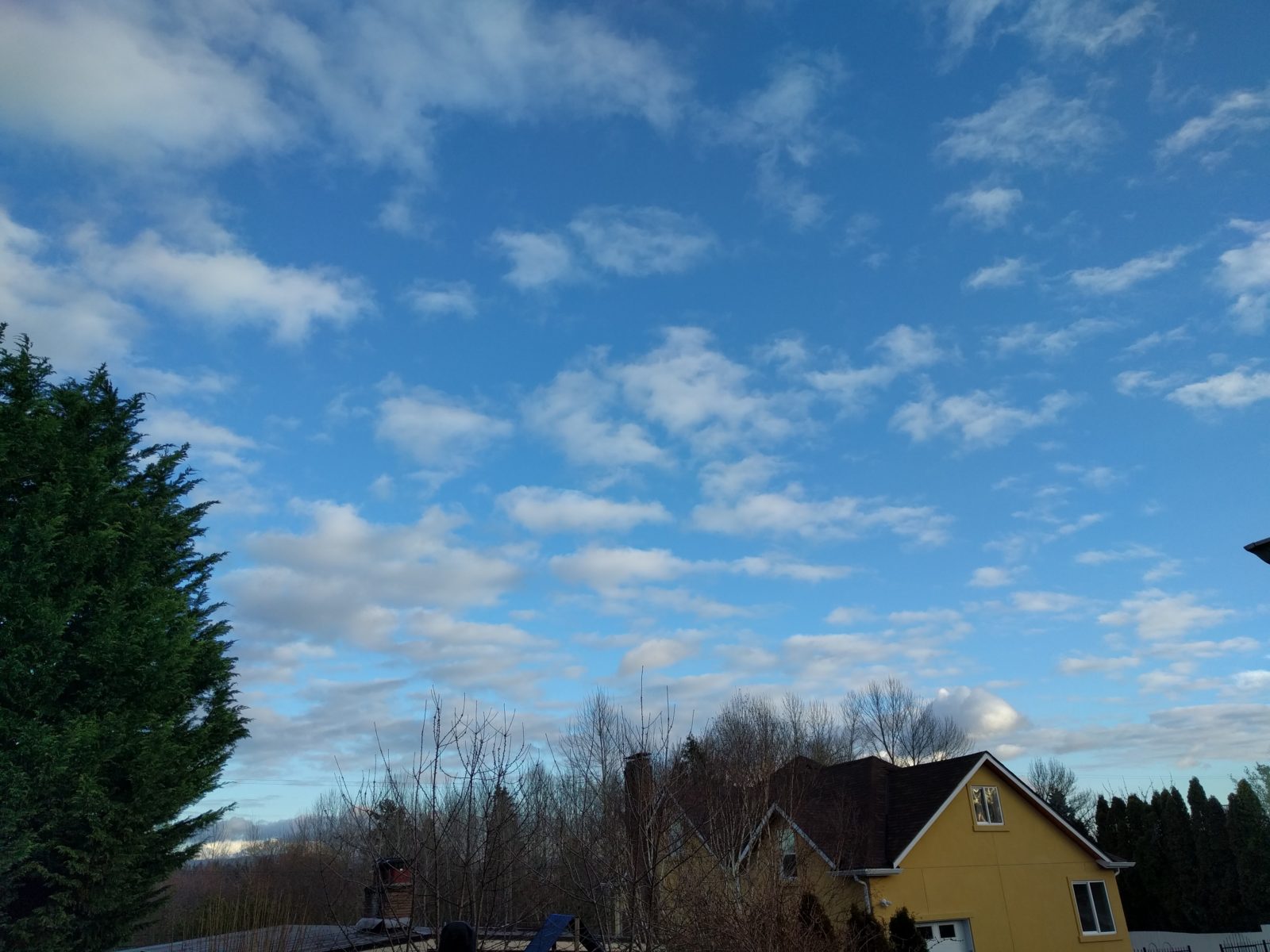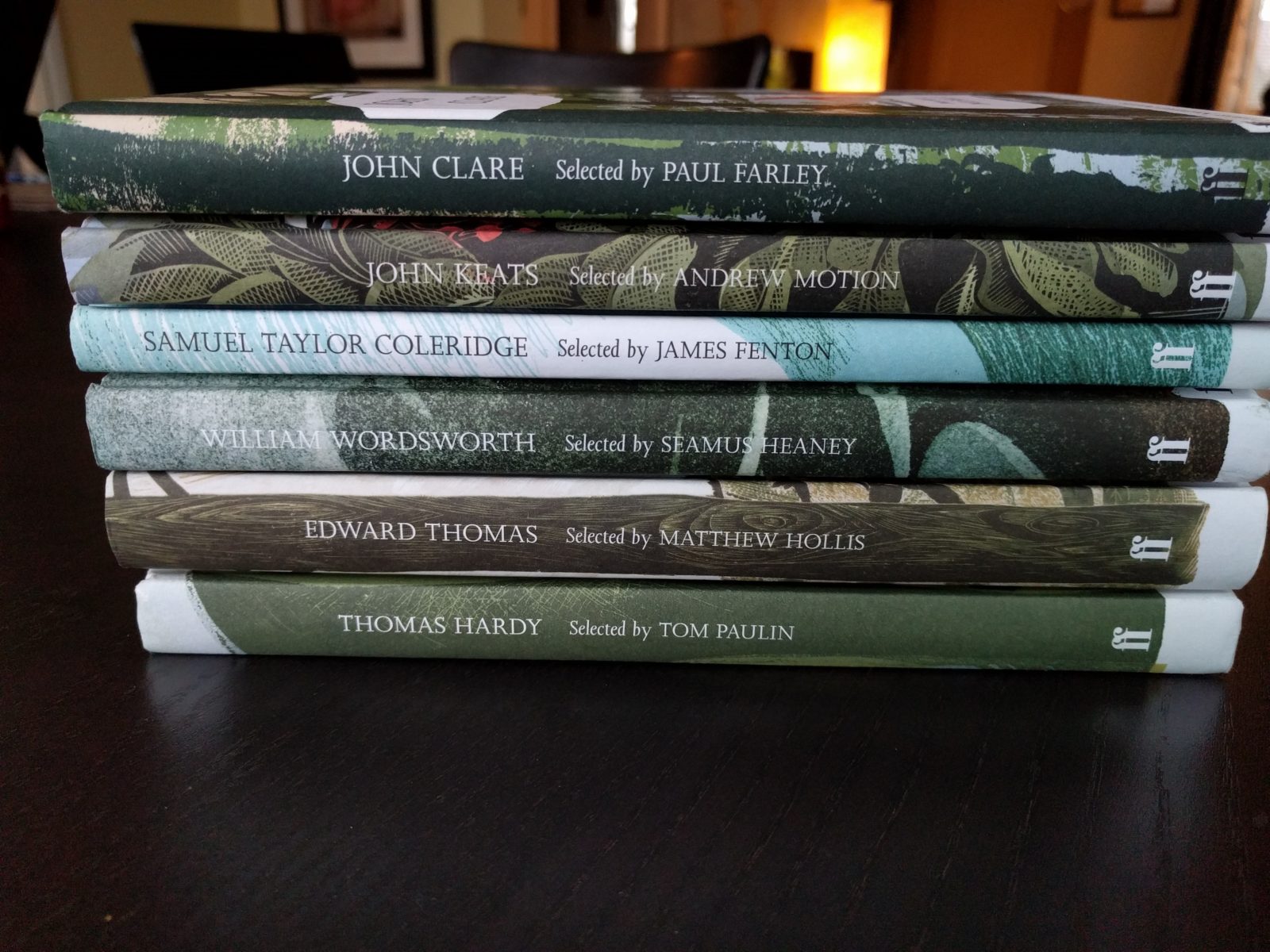In 2016 I’m doing a 365 Nature project. Learn more about the project and see all the 365 Nature posts.
We returned to the Insh Marsh reserve to walk the other half of the trails we didn’t get to on Day 208 this morning, the Tromie Meadow trail. The weather was the same as it’s been all week, cloudy with breaks of sun, somewhere in the 50’s and no rain. The path quickly led us into a large heath landscape that will likely be stunningly beautiful in a couple of weeks when the purple buds open into flowers. Today it was still quite beautiful, even without the color, with the dark clouds in the sky and the mountain on the horizon. We spotted a few butterflies, some of the same Scotch Argus we’d seen previously.
The path then led us through a fairy tale like forest full of birch trees, thin, white trunks dripping with lichens, standing in a bed of heath and huckleberry. The narrow, winding path wandered through the grove of trees as the passing sunlight shone through the leaves in dappled patches.
The path took us to another, dramatically different habitat, this one a large meadow of wildflowers sitting along the banks of the River Tromie. There were insects buzzing in the meadow, despite the temperatures not being very warm. As we walked through, the sun came out and many insects sprang to life. I spotted more of the Ringlet butterflies and one of the fritillary butterflies, which I think was a Dark Green Fritillary. I spotted a few beetles and bumble bees, spiders and flies. In a tree along the river, I observed a lot of caterpillar nests, silk spun in tent-like enclosures. As I looked at it, I spotted a number of small white moths with black spots sitting on the nest. My guess was they were the caterpillars that had just emerged from their cocoons inside the tents.
We followed the path along an old stone wall, full of amazing lichens and mosses, all crowded together like an abstract mosaic painting. One stone that was laying flat, creating a shelf on the wall, was covered in mosses in which was growing sorrel. I find these stone walls endlessly fascinating. The life they contain and shelter has countless stories. The walls are so old they’ve witnessed many things over time. And the lichens and mosses growing on them must be ancient.
The path then led us up a hill back into the heath meadow where we startled a deer so orange that I first thought it was a fox. I believe it was a Roe Deer. Directly after that we encountered a large flock of Long-tailed Tits foraging in the trees with other birds like Blue and Great Tits and Willow Warblers.
Later in the afternoon we went over the railroad tracks by our cottage and explored part of Insh Marsh that has no trails. It was interesting to walk in the area we’ve overlooked the last few days and quite an adventure. What appeared to be a huge grass field was indeed, a marsh. The area closest to the tracks was dry and grassy where the sheep grazed. However, not far out it started getting wet and we walked along a berm full of tall grasses. We all disappeared in them they were so tall. Mixed into the grasses were thistles and stinging nettles and other wetland plants. Stepping was tricky as the grass was so dense we couldn’t see what was under our steps.
We encountered a number of tiny frogs, which scattered when we stepped. I found one leg of a bird, a pile of feathers and a lot of scat. A few ducks swam in the canals on either side of the berm. We heard birds and caught glances a few times and decided what we had seen were Sedge Warblers. The curiosity that most caught my attention was when I realized the flowers of the tall grasses were covered in syrphid flies. As I looked, many individual stalks of grass had two, three or up to ten individual flies, all facing downward towards the ground, and all quite dead. How they all came to be there, facing down on the same plant, I don’t know. Once I noticed, I kept looking and found entire patches of grass covered in syrphid flies. They weren’t all the same species. As far as I could tell, there were at least a couple different species. I’ve never seen anything like it before.
The final bird encounter of the day was when I noticed some strange birds in the field next to our cottage. I took a few photos and watched them with the binoculars, but I didn’t know what they were. They were foraging with Starlings in the field. I finally narrowed it down to a couple of birds in the thrush family and settled on Mistle Thrushes based on their appearance and habitat.







Those syrphids — could it have been a mind-control fungal infection, or something? Can’t quite make sense of it. I’ve seen lots of individual flying insects dead at tips of leaves this time of year, but never a whole mess of the same species like that.
Oh good thought. That may be the case, I’ll have to try and research it when I get a chance.